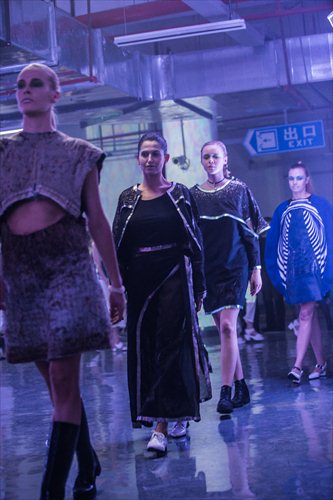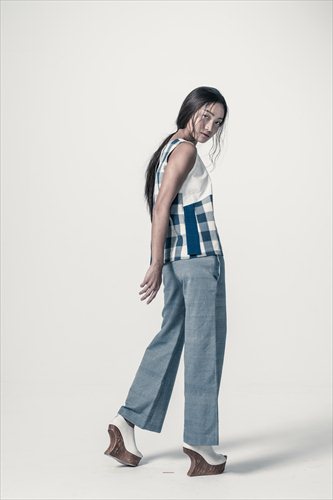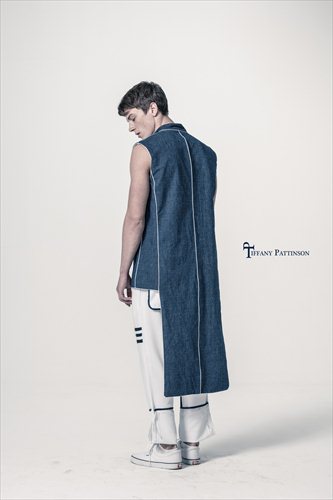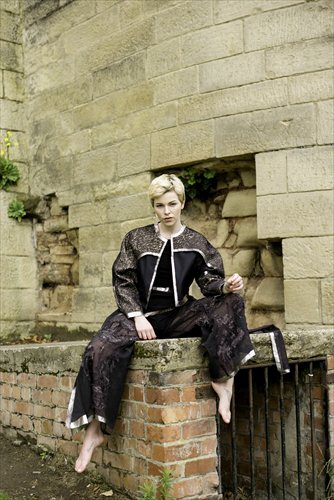Young designers in Shanghai choose eco-designs over traditional fashion
Traditionally Chinese spurn second-hand clothes or clothes made with second-hand materials. They are certainly not popular and rarely welcomed. But a group of young designers in Shanghai has a contrary view. They are producing chic outfits and glamorous clothes using not just recycled materials, but also integrating sustainable crafts in their designs to promote the concept of eco-fashion in local communities.
After graduating from the Guangzhou Academy of Fine Arts in 2014 Joyce Wang worked for the major international fashion house JACK & JONES. Not wanting the huge amounts of unused sample materials to go to waste, she always picked up discarded fabrics from work and used them for her own designs.
"I am someone who doesn't like any waste at all, no matter whether it's materials or food or anything. I try my best to maintain the concept of not wasting anything, because that is the least we can start doing," Wang said.

Models showcase eco-designs in the catwalk. Photo: Courtesy of the interviewee
Reducing waste
The denim used to make jeans is quite a pollutant because it has to be washed many times during the production process. To reduce the waste caused by discarded denim, Wang recycles a lot of denim. She once made an elegant coat from the discarded sections of a few pairs of jeans.
Eventually, Wang became an independent designer focusing on eco-design. Last April, she made her debut at TDM Shanghai Alternative Fashion Week, and won the best designer award. In May 2015, she launched her own brand, Joyce Wang.
For Wang, the process of eco-design is not too different from ordinary fashion design. But sustainable fashion is a new concept in the marketplace. "People think, 'is this something that customers won't like? Is it something leftover? Or is it unfashionable?' There are a lot of doubts," Wang said. "Getting people to understand and learn about it is the hard part."
Wang had previously designed an up-cycled collection with second-hand materials. Visitors loved her show and her designs. But when some buyers at designer markets learned that the materials were not first hand, they had difficulty accepting or understanding the pieces.
"But I think in the future this will be very trendy. There are second-hand markets and lots of people go to these every day," Wang said. "This will be fashionable maybe not now, maybe in one year, two years or 10 years. But we won't stop until we get there."
At present Wang sells mostly at concept stores or designer shops. She does not mass produce, and only completes a minimum order each season.
Sustainable designs
On April 7, Wang launched a new collection in the WeRable Fashion Show in Shanghai where five designers showcased their sustainable designs.
Alongside eco-designer Tiffany Pattinson, Wang worked with the Bouyei minority ethnic group in Guizhou Province for their latest collections.
"We went to the factories and learned how they handcrafted the materials," Pattinson said. "They used organic materials, and they used indigo as the dye. Indigo comes from indigofera, a shrub grown locally. The whole process is eco-friendly."
Unlike some industrial dyes, indigo is natural and does not pollute water supplies. The Bouyei people extract the indigo from the shrub, which is then returned to the ground as a fertilizer. "It comes from the ground and goes back to the ground," Wang said. Like indigo, most materials used in their designs are eco-friendly. They use pure cotton and up-cycled fabrics.

This blue in Joyce Wang's design is made with indigo. Photo: Courtesy of the interviewee
Born in the concrete jungle of Hong Kong, Pattinson likes nature and has always been interested in conserving and enhancing the environment.
She was a finalist in the EcoChic Design Awards China 2012 and her collection was showcased in the Shanghai Fashion Week that year. At that event, she met other people in the green industry, and began learning how to make eco-design a sustainable process and a profitable business. Her brand, Tiffany Pattinson, focuses on sustainable design, and she has toured the world with her collections.
Pattinson collects up-cycled fabrics from big factories. When these factories discard their old stock, they allow Pattinson to buy this for very little money - sometimes she just pays the cost of transport.
"Actually the materials are still new. It is just that they can't sell them. This is good - it's more sustainable this way than ordering new fabrics making new things and then forgetting about the old stock," Pattinson said.
Pattinson believes that with the recycled materials the prices for her clothes are lower, and she makes her designs affordable for ordinary people.
Sustainable culture
Pattinson also collects vintage garments. Some vintage pieces are quite old, but she adapts details from the designs and mixes them with new fabrics to create something entirely original.
"Instead of telling people they are second-hand, I like to tell them that they are beautiful materials from the past carrying their own stories," Pattinson said.
For Pattinson, sustainability is not just about the materials. It is also about the culture. That is why Pattinson and Wang worked with the Bouyei minority ethnic group. "The way they make fabrics, the prints, and the embroidery are all full of stories that people in the modern age kind of forget," Pattinson said.

Tiffany Pattinson's new collection focuses on environmental and cultural sustainability. Photo: Courtesy of the interviewee
Pattinson leaves samples of her designs in selected stores, where customers, if they like the outfits, can then order from her. She usually makes her outfits so that they can be worn in different ways - inside out, back-to-front or even assembled like Lego pieces. "You can make the pieces into something different if you like. The pieces come with a little leaflet of suggestions for combinations that might inspire the customers," she said.
Ordering adventures
Although the patterns and the sizes of her clothes look conventional, it can be an adventure ordering from Pattinson, because the materials vary all the time. The old stock that she receives from factories is always different, and she elects to use different materials at different stages of production.
"Because I sell overseas, I have seen European and Americans quite happy with this approach. And now I am pleased to see that China is catching up," Pattinson said.
During WeRable Fashion Week, young designer Zhang Lujia also showcased three pieces from her eco-design collection which she titled "Abundant Abandonment." "It means that waste things can be practical and beautiful," Zhang said.

Zhang Lujia transforms up-cycled textiles into new garments. Photo: Courtesy of the interviewee
Zhang graduated last year from Nottingham Trent University. She collected waste yarn and used felting technology to create new fabrics.
Her education has made her feel more responsible to nature. Zhang studied art education during her bachelor degree studies at East China Normal University in Shanghai.
"I thought, why not put fashion and education together? So I decided to make sustainable fashion," Zhang said.
Newspaper headline: Second-hand, first-class